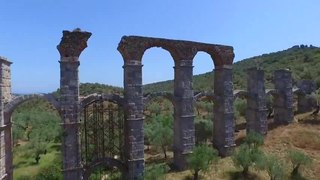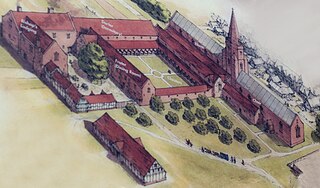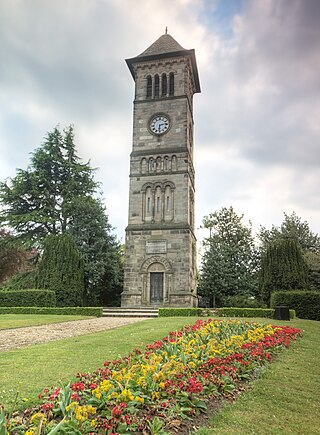
Mayfair is an affluent area in the West End of London towards the eastern edge of Hyde Park, in the City of Westminster, between Oxford Street, Regent Street, Piccadilly and Park Lane. It is one of the most expensive districts in the world.

Thomas Hobson was an English carrier, best known as the origin of the expression Hobson's choice.

Lawrence Sheriff was a Tudor merchant and benefactor, who was notable for being grocer to Queen Elizabeth I, and for creating Rugby School through an endowment in his will.

Savile Row is a street in Mayfair, central London. Known principally for its traditional bespoke tailoring for men, the street has had a varied history that has included accommodating the headquarters of the Royal Geographical Society at 1 Savile Row, where significant British explorations to Africa and the South Pole were planned; and more recently, the Apple office of the Beatles at 3 Savile Row, where the band's impromptu final live performance was held on the roof of the building.

Coombe is a historic neighbourhood in the Royal Borough of Kingston upon Thames in south west London, England. It sits on high ground, east of Norbiton. Most of the area was part of the former Municipal Borough of Malden and Coombe before local government re-organisation in 1965. It now shares borders with the boroughs of Merton and Sutton with, to the north, the small, inter-related neighbourhoods of Kingston Hill and Kingston Vale, beyond which is Richmond Park in Richmond; and Roehampton/Putney Vale in Wandsworth. To the east are public playing fields and Wimbledon Common.

The River Tyburn was a stream in London, England. Its main successor sewers emulate its main courses, but it resembled the Colne in its county of Middlesex in that it had many distributaries. It ran from South Hampstead, through Marylebone, Mayfair, St James's parish/district and Green Park to meet the tidal Thames at four sites, grouped into pairs. These pairs were near Whitehall Stairs, and by Thorney Street, between Millbank Tower and Thames House. Its much smaller cousin, the Tyburn Brook, was a tributary of the Westbourne and the next Thames tributary.

Conduit current collection is an obsolete system that was used by some electric tramways to pass current to streetcars via a "conduit", a small tunnel under the roadway. Modern systems fall under the term ground-level power supply.

Cornhill is a ward and street in the City of London, the historic nucleus and financial centre of modern London, England. The street runs between Bank Junction and Leadenhall Street.

The Romans constructed aqueducts throughout their Republic and later Empire, to bring water from outside sources into cities and towns. Aqueduct water supplied public baths, latrines, fountains, and private households; it also supported mining operations, milling, farms, and gardens.

The Great Conduit was a man-made underground channel in London, England, which brought drinking water from the Tyburn to Cheapside in the City.

The New River Company, formally The Governor and Company of the New River brought from Chadwell and Amwell to London, was a privately-owned water supply company in London, England, originally formed around 1609 and incorporated in 1619 by royal charter. Founded by Hugh Myddelton with the involvement of King James I, it was one of the first joint-stock utility companies, and paved the way for large-scale private investment in London's water infrastructure in the centuries which followed.

The 18th century was a period of rapid growth for London, reflecting an increasing national population, the early stirrings of the Industrial Revolution, and London's role at the centre of the evolving British Empire. By the end of the century nearly one million people lived in London, about one tenth of the population of Great Britain. By 1715, London's population reached an estimated 630,000 people, roughly equaling that of Europe's largest city until that time, Paris. Within a few years London itself was the largest city in Europe, reaching 750,000 people by 1760 and 1 million by the end of the century. The average height of a male Londoner was 5'7¼" (171cm) and the average height of a female Londoner was 5'1¾" (157cm).

Lamb's Conduit Street is a street in Holborn in the West End of London. The street takes its name from Lambs Conduit, originally known as the Holborn Conduit, a dam across a tributary of the River Fleet.

The Franciscan Friary was once a large estate located on the west side of Lichfield city centre in Staffordshire. The estate was built and inhabited by the Franciscan Friars from 1237. At one time the estate consisted of a large church, a cloister, dormitory lodge and a refectory building as well as many other domestic dwellings.

Lichfield Clock Tower or Friary Clock Tower is a 19th-century Grade II listed clock tower located on "The Friary" south of Festival Gardens in the city of Lichfield, Staffordshire, in the United Kingdom.

Conduit Street is a street in Mayfair, London. It connects Bond Street to Regent Street.
Holy Cross Preparatory School is an independent preparatory school for girls aged 4–11 in Coombe, London, England.

New River Head is a historic site located adjacent to Sadler's Wells Theatre on Rosebery Avenue and Amwell Street in the Clerkenwell area of London, England. Originally it was the London terminus of the New River, an artificial watercourse opened in 1613 to supply water to London. Subsequently the site also became the headquarters for the New River Company, the owners of the New River, and for its successors, the Metropolitan Water Board, the Thames Water Authority and Thames Water plc.

The Perseverance is a pub at 63 Lamb's Conduit Street, Bloomsbury, London WC1, on the corner with Great Ormond Street.

William Lambe (1495–1580) was a wealthy cloth merchant in the City of London during Tudor times who engaged in a wide range of philanthropic deeds, most notably endowing the construction of St James' Church, Islington, the construction of the eponymous Lamb's Conduit, traces of which remain in a number of London street names, and the endowment of Sutton Valence School. He was a devout protestant and was friends with a number of notable protestant clerics of the time.



















